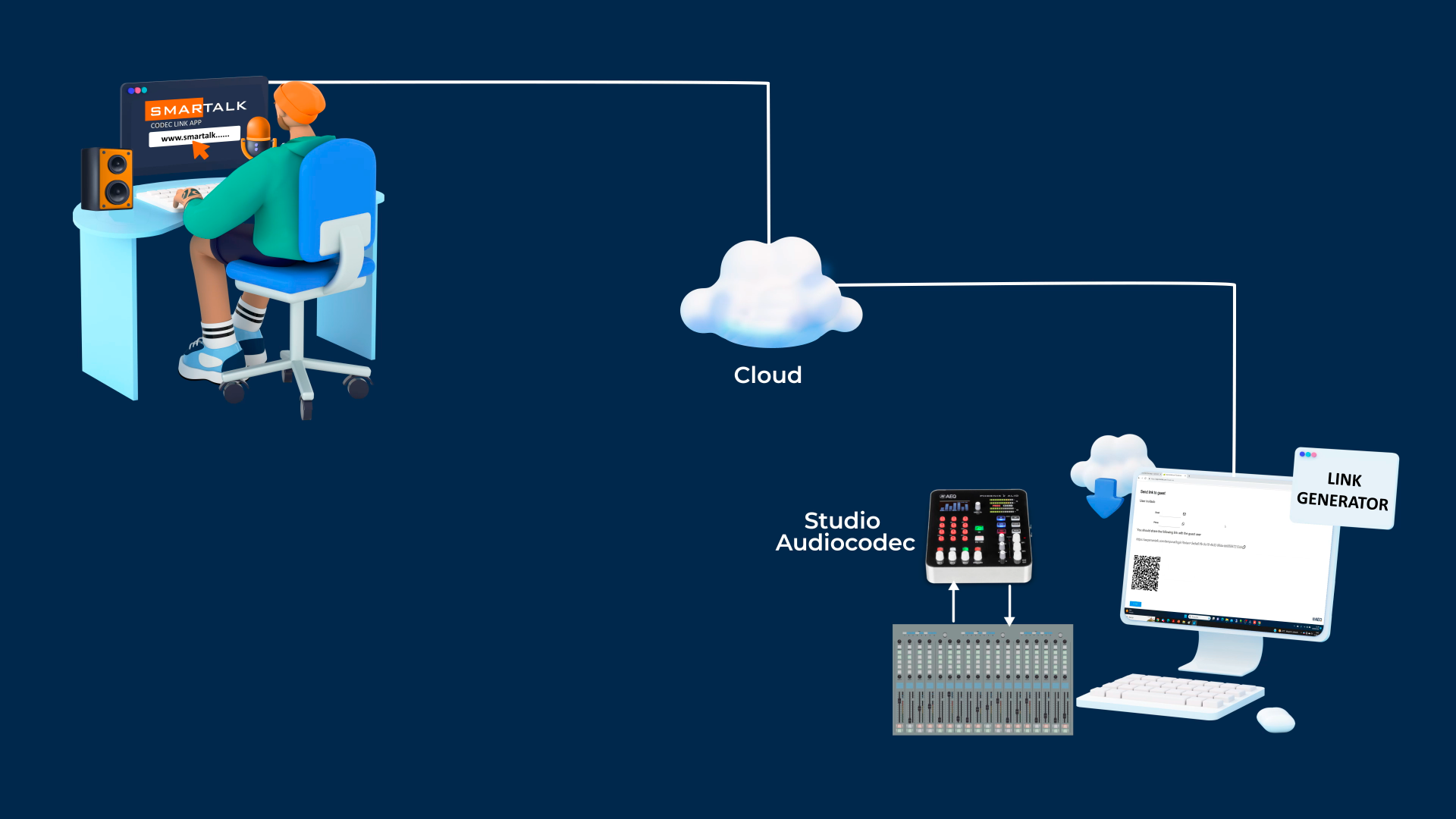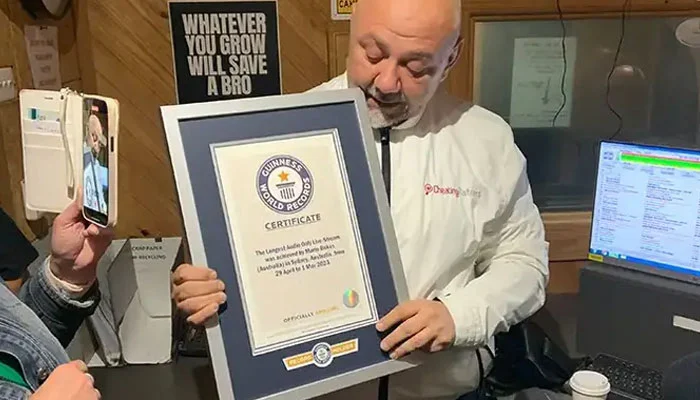© 2023 AEQ
AEQ offers the Smartalk service to create two-way HQ audio links easily to the audiocodec of the studio
When a breaking news event happens, you can communicate with the station's audiocodec and send a report via via Smartphone, PC or tablet
SmarTALK’s web-based management portal generates links that are sent to the correspondent by email, WhatsApp, QR code or any other means.

When the correspondent clicks on the link, a browser opens and connects to the station’s AEQ Phoenix audiocodec, sending OPUS-encoded audio to it. Without further intervention, the audio link between the device’s microphone and speaker or headset and the station’s audiocodec is ready.

You don’t need to have an audiocodec, install a special software, or have to be helped to figure it out and use it. Thus, sporadic collaborators can broadcast from anywhere there is Internet connectivity.
The participant receives the link, clicks, the welcome screen appears, clicks again and is ready to participate. Sending a reporter, or a mobile unit, or moving the guest is avoided, as they use their own computer or smartphone to connect and participate.
Any user of AEQ Phoenix audiocodecs can request a trial of the SmarTALK service. If, after the trial, the user decides to contract the service, an annual renewable licence can be purchased based on the number of audiocodecs per studio to be enabled for the service.
SmarTALK subscribers can make any use of the service as they see fit, and send their connection link as many times as they need during the subscription period, for the number of licensed Phoenix audiocodecs.
When a license, whether on a trial or permanent, is activated on a PC of the station, the web application is activated so that SmarTALK users can create the “GUESTS” or users of remote terminals, send them the links, assign calls to audiocodecs and put them on the air. There is also an administrator window, to register or modify stations, audiocodecs and other users.
If SmarTALK is enabled for a state-of-the-art AEQ Phoenix audiocodec (Venus 4), individual audiocodec channels can be preset to SmarTALK, allowing a studio audiocodec to dynamically work with SmarTALK or against other portable audiocodecs. In other Phoenix audiocodecs, channels can be assigned to the service manually.
SmarTALK uses the very high-quality OPUS encoding, compatible with AEQ Phoenix audio codecs.
To ensure high availability and low delay, a redundant infrastructure has been created and distributed across several cloud servers in different regions of the world, so that each audiocodec works against a sufficiently close cloud infrastructure.
For greater operational flexibility, two working modes have been defined:
Guest mode, the most common: The studio sends a link by email, WhatsApp or QR code. Accepting the link opens a welcome screen, and clicking on it registers the user on the operator’s waiting list, to go on air at the right time.
Reporter mode: Sometimes you can work without an operator in the studio. In this case, by tapping on the welcome screen, the user remains active in the air on the pre-assigned codec line or the one available at the station.
To configure an AEQ Phoenix audiocodec to implement the SmarTALK service, and try it for free, you have:
• An user manual in: https://aeq.es/wp-content/uploads/2023/08/AEQ-SmarTALK-Users-Manual.pdf
• And the support of AEQ’s commercial network.

